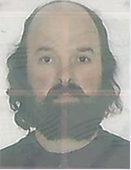This user has not added any information to their profile yet.
 The Extended Relativity Theory in Clifford spaces developed by the author (Matej Pavsic in Slovenia has also collaborated in this development); Gravity, Strings and Membranes; Grand-Unification; Fractals, Quantum Field Theory, Mathematical Physics, Noncommutative Geometry and Number Theory.
The Extended Relativity Theory in Clifford spaces developed by the author (Matej Pavsic in Slovenia has also collaborated in this development); Gravity, Strings and Membranes; Grand-Unification; Fractals, Quantum Field Theory, Mathematical Physics, Noncommutative Geometry and Number Theory.
My current plans are devoted to the Extended Relativity in Clifford Spaces, Born's Reciprocal Relativity Theory, and R (x) C (x) H (x) O-valued gravity as a Grand Unified Field Theory.
1 Extended Relativity in Clifford Spaces
Despite many decades of research the physical foundations of string (M, F) theory are still unknown. General relativity was based on the principle of equivalence and general covariance. Such principles are still lacking in string (M, F) theory. The Extended Relativity theory in Clifford-spaces (C-spaces) is a natural extension of the ordinary Relativity theory whose generalized coordinates are Clifford polyvector-valued quantities which incorporate the lines, areas, volumes, and hyper-volumes degrees of freedom associated with the collective dynamics of particles, strings, membranes, p-branes moving in a D-dimensional target spacetime background. C-space Relativity permits to study the dynamics of all p-branes, for different values of p, on a unified footing. The theory has 2 fundamental parameters : the speed of a light c and a length scale which can be identified with the Planck length. The novel physical consequences are manifold.
2 Born's Reciprocal Relativity Theory
Most of the work devoted to Quantum Gravity has been focused on the geometry of spacetime rather than phase space per se. The first indication that phase space should play a role in Quantum Gravity was raised by Born. The principle of Born's reciprocal relativity was proposed long ago based on the idea that coordinates and momenta should be unified on the same footing, and consequently, if there is a limiting speed (temporal derivative of the position coordinates) in Nature there should be a maximal force as well, since force is the temporal derivative of the momentum. A maximal speed limit (speed of light) must be accompanied with a maximal proper force.
Recently we explained that what one may interpret as "dark matter" in galaxies, for example, is just an effect of observing ordinary galactic matter in different accelerating frames of reference than ours. Special Relativity dismissed the aether; could Born's Reciprocal Relativity Theory dismiss Dark Matter/Dark Energy, leaving only the cosmological constant?
3 R(x)C(x)H(x)O-valued gravity as a Grand Unified Field Theory
More recently have shown how R (x) C (x) H (x) O-valued Gravity (real-complex-quaterno-octonionic Gravity) naturally can describe a grand unified field theory of Einstein's gravity with a Yang-Mills theory containing the Standard Model group SU(3)×SU(2)×U(1). The advantage of this proposal is that it does not require the introduction of extra dimensions nor supersymmetry. We have replaced the Kaluza-Klein prescription to generate gauge symmetries in lower dimensions from isometries of the internal manifold, by the U(16) isometry group transformations of the R (x) C (x) H (x) O-valued metric.
The C (x) H (x) O algebra has been explored deeper. It is found that it can furnish the gauge group SU(4)C×SU(4)F×SU(4)L×SU(4)R (color, family, left, right chiral symmetry) revealing the possibility of extending the Standard Model by introducing additional gauge bosons, heavy quarks and leptons, and a fourth family of fermions with profound physical implications. An analysis of C (x) H (x) O -valued gravity bears a connection to Nonsymmetric Kaluza-Klein theories and complex Hermitian Matrix Geometry. The key behind these connections is in finding the relation between C (x) H (x) O -valued metrics in two complex dimensions with complex metrics in higher dimensional real manifolds (D = 32 real dimensions in particular). It is desirable to extend these results to hypercomplex, quaternionic manifolds and Exceptional Jordan Matrix Models.
Learn more at: http://independent.academia.edu/CarlosCastroPerelman
Contact Carlos at: perelmanc@hotmail.com

